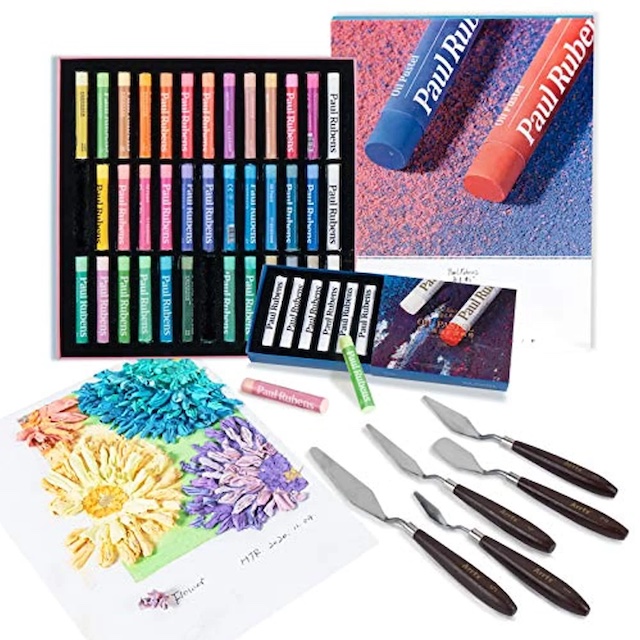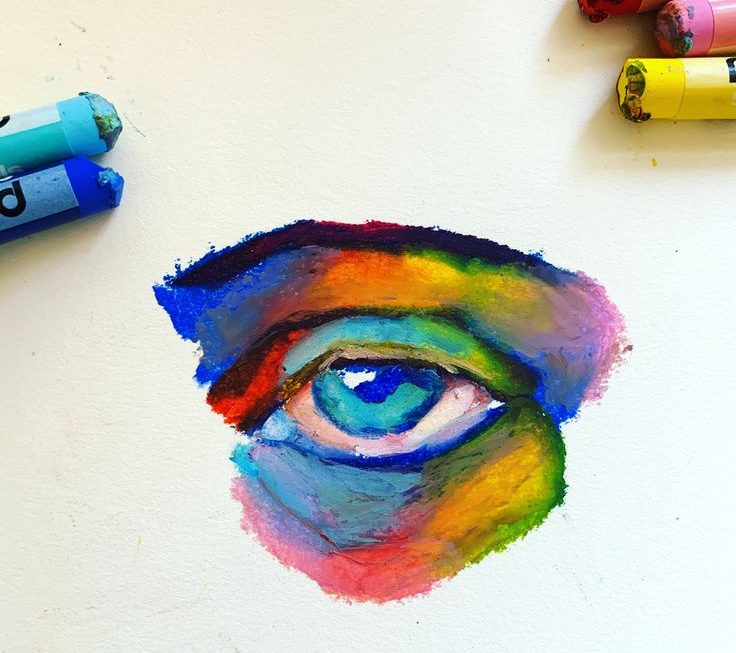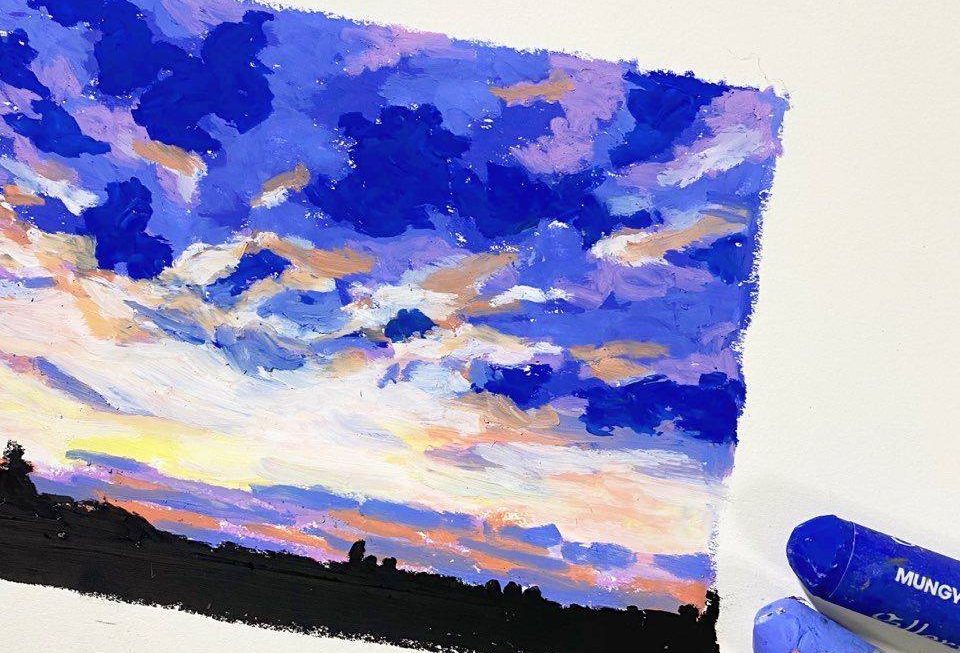Introduction
Oil pastels are a versatile and vibrant medium that allows artists to create stunning works of art with ease. Unlike traditional oil paints, oil pastels are portable, easy to use, and offer a unique texture and blending capabilities. In this comprehensive guide, we will explore the ins and outs of painting with oil pastels, from understanding the basic techniques to mastering advanced methods. Whether you are a beginner looking to explore a new medium or an experienced artist seeking to improve your skills. This guide will provide you with everything you need to know to unleash your creativity with oil pastels.
Part 1: Understanding Oil Pastels
Oil pastels are made with a blend of pigment, non-drying oil, and wax binder, which gives them a creamy and rich texture. Unlike dry pastels, oil pastels do not require fixatives and can be layered to create stunning depth and vibrancy. Additionally, oil pastels can be used on a variety of surfaces, from traditional paper to canvas, making them a versatile medium for artists of all levels.
Level 1: The Composition of Oil Pastels
Understanding the chemical composition of oil pastels and how it affects their application and durability.
Level 2: The Versatility of Oil Pastels
Exploring the various surfaces and techniques that can be used with oil pastels to create different effects and textures in artwork.
Part 2: Basic Techniques of Oil Pastel Painting
Before diving into more advanced methods, it is essential to master the basic techniques of oil pastel painting. This includes understanding how to blend, layer, and create different textures with oil pastels to achieve stunning results.
Level 1: Blending and Mixing Colors
Learning how to blend oil pastels to create smooth transitions and vibrant color combinations.
Level 2: Layering and Texturing
Exploring the layering and texturing techniques that can be used to create depth and dimension in oil pastel artwork.
Part 3: Advanced Techniques of Oil Pastel Painting
Once you have mastered the basic techniques, you can begin to explore more advanced methods of painting with oil pastels. This may include experimenting with unconventional tools, creating intricate details, and exploring different styles and subject matters.
Level 1: Using Unconventional Tools
Discovering unconventional tools and techniques, such as solvent blending and scraping, to create unique and expressive oil pastel artwork.
Level 2: Exploring Styles and Subject Matters
Experimenting with different styles, such as impressionism or abstract art, and exploring a wide range of subject matters to expand your artistic capabilities.
Part 4: Tips and Tricks for Oil Pastel Painting
To achieve the best results with oil pastels, there are several tips and tricks that can be utilized. This may include proper storage and handling of oil pastels, as well as techniques for preserving and framing finished artwork.
Level 1: Proper Storage and Handling
Understanding how to store and handle oil pastels to prevent breakage and ensure their longevity.
Level 2: Preserving and Framing Artwork
Learning the best practices for preserving and framing oil pastel artwork to maintain its vibrancy and protect it from damage over time.
Part 5: Inspiration and Resources for Oil Pastel Artists
For artists looking to expand their knowledge and find inspiration, there are many resources available for oil pastel painting. This may include books, online tutorials, workshops, and communities where artists can connect and share their work.
Level 1: Books and Tutorials
Exploring the best books, online tutorials, and instructional resources for artists interested in learning more about oil pastel painting techniques.
Level 2: Workshops and Communities
Discovering local workshops and online communities where artists can connect, share their work, and find inspiration from other oil pastel artists.
Part 6: Blending Techniques for Oil Pastels
One of the most appealing aspects of working with oil pastels is the ability to blend colors together to create smooth transitions and gradients. There are several different techniques for blending oil pastels, each with its own unique effect.
One common blending technique is to use your fingers to smudge and blend the colors together. This allows for a seamless transition between colors and can create a soft, painterly effect. To avoid getting messy, it is helpful to have a piece of scrap paper nearby to wipe excess color off your fingers as you work.This technique allows for more control and precision when blending, making it a great choice for detailed work.
For a more painterly effect, consider using a brush dipped in turpentine or mineral spirits to blend the colors together. This technique creates a more fluid and smooth blend, similar to traditional oil painting. However, it is important to work in a well-ventilated area when using solvents, as they can be toxic if inhaled.
Experimenting with different blending techniques can help you achieve a wide range of effects and textures in your oil pastel paintings. Try combining different methods or using them in combination with other tools, such as palette knives or cotton swabs, to create unique and dynamic effects.
Part 7: Layering and Building Texture with Oil Pastels
Layering is an essential technique for creating depth and richness in oil pastel paintings. By building up layers of color, you can achieve a wide range of effects, from vibrant and saturated to subtle and nuanced.
Start by laying down a base layer of color, using light pressure to fill in the areas of your composition. Once the base layer is established, gradually build up additional layers of color to create depth and dimension. Experiment with different colors and opacities to create dynamic and harmonious combinations.
To enhance the texture of your oil pastel paintings, consider incorporating different tools and techniques. For example, you can use a palette knife to apply thick, impasto layers of color, creating a sense of tactile texture and movement. Alternatively, experiment with scratching into the layers of color using a pointed tool, such as a wooden skewer or a craft knife, to reveal underlying colors and create intricate patterns.
Another technique for creating texture is to use a sgraffito technique, which involves laying down a layer of color and then scratching away portions of it to reveal the underlying layers. By experimenting with layering and texture, you can elevate your oil pastel paintings to new levels of depth and visual interest. Don’t be afraid to experiment and push the boundaries of what is possible with this versatile medium.
Part 8: Protecting and Preserving Oil Pastel Paintings
Once you have completed a vibrant and expressive oil pastel painting, it is important to take steps to protect and preserve it for years to come. While oil pastels are known for their rich and lustrous colors, they can be delicate and prone to smudging if not properly handled and stored.
One of the simplest ways to protect your oil pastel paintings is to use a fixative spray. When using a fixative spray, be sure to follow the manufacturer’s instructions and apply it in a well-ventilated area to avoid inhaling fumes.
When it comes to storing your oil pastel paintings, it is important to handle them with care to avoid smudging or damaging the surface. Consider framing your artwork behind glass to provide a barrier between the surface and external elements, such as dust and moisture. If framing is not an option, store your paintings in a protective portfolio or flat file to keep them safe from damage.
To prevent smudging, consider placing a sheet of glassine paper over your oil pastel paintings before storing or transporting them. This thin, non-abrasive paper provides a protective barrier without causing any damage to the surface of the artwork.
By taking these simple precautions, you can ensure that your oil pastel paintings remain vibrant and intact for years to come. Properly protecting and preserving your artwork will allow you to enjoy and share your creations for generations to come.
Conclusion
Painting with oil pastels offers artists a unique and versatile medium for creating vibrant and expressive artwork. By understanding the basic techniques, mastering advanced methods, and utilizing tips and resources. Artists can unlock the full potential of oil pastels to unleash their creativity and create stunning works of art. Whether you are new to oil pastels or an experienced artist, the possibilities are endless when it comes to painting with this exciting medium.





